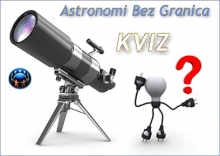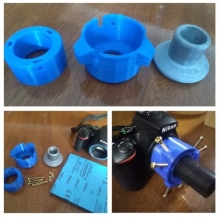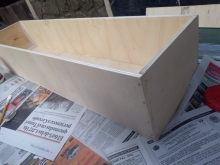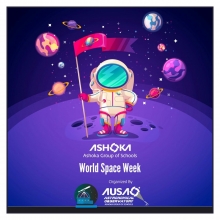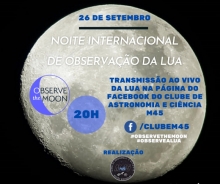Lunar Explorations 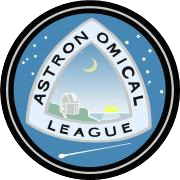
The search for change on the Moon – a search in vain.
Developed by John Goss of the Astronomical League
People have often fancied that the moon was an active world, even harboring life. Many observers, both professional and amateur, have believed that they stumbled onto to visual evidence suggesting changes occurring on the moon perhaps from vulcanism, perhaps due to life.
In this challenge you will be observing various features on the surface of the Moon that past observers mistakenly believed indicated active changes on the Moon. To help you with your observations, you can find an interactive map of the Moon here. Image of Moon and observers above by Babak Tafreshi.
Share your progress on this challenge with us and the world on Facebook, the Flickr group, or Tweet using #GAM2015 hashtag (@gam_awb).
If you like you can print out this Checklist (PDF) of all the features to help you keep track. The Astronomical League has also provided a map (PDF) of each feature to help you find them.
|
Feature (MAP (PDF)) |
Best Observing Dates |
Observation Notes |
|
Between the craters Walther and Gauricus. |
April 26, 27 |
1671. Several times, Giovanni Domenico Cassini thought he saw a misty formation, perhaps a cloud |
|
Gassendi, crater. |
April 1, 29, 30 |
1776. English astronomer William Herschel imagined that the shading variations on the crater floor were caused by the changing shadows of a vast forest of trees that were several times taller than those on Earth. |
|
Hevelius, crater. |
April 2, 3 |
1787. German observer Johann Hieronymous Schroeter suspected that a volcano recently formed in the Hevelius crater. |
|
Alhazen, crater. |
April 20, 21 |
1791. Schroeter saw changes in the definition of the crater that he thought were possibly due to mist or vegetation. |
|
Two-thirds of the distance from Eratosthenes to Schroeter in Sinus Aestruum. |
April 27, 28 |
1822. Bavarian observer Franz von Paula Gruithusien saw the layout of a great lunar city, Wallwerk. |
|
Sinus Iridum. |
April 29, 30 |
1837. During the Great Moon Hoax, newspaper writer Richard Adams Locke reported that rational beings were said to live there. |
|
Messier and Messier A, craters. |
April 22, 23 |
1855. Some observers, led by the renowned observer the Reverend Thomas William Webb, saw a change in their respective configurations. |
|
Cichus, crater in Mare Nubium. |
April 28, 29 |
1859. Rev. Webb thought it had enlarged its diameter since Schroeter observed it seventy years earlier. |
|
Fracastorius, crater. |
April 23, 24 |
Circa 1870. French astronomer Jean Chacornac. Fragmentary walls believed to indicated the moon once experienced ocean erosion. |
|
Plato, crater. |
April 27, 28 |
1869. English amateur astronomer William Radcliffe Birt encouraged his colleagues to closely examine the flat floor of Plato for any signs of change. |
|
Linne, small crater. |
April 25, 26 |
1866. Johann Frederich Julius Schmidt, followed by others, thought that crater Linne had been damaged or transformed. |
|
Hyginus N, near crater Hyginus along Rima Hyginus. |
April 25, 26 |
1877. Hermann Klein, Director of the Cologne Observatory, found a dark patch near Hyginus crater, one that hadn’t been visible in earlier observations. |
|
Theophilus, crater. |
April 24, 25 |
Circa 1900. Suspected snowstorms on the central peak were glimpsed by William Henry Pickering. |
|
Plinius, crater. |
April 24, 25 |
Circa 1900. Suspected snowstorms on the central peak were glimpsed by William Pickering. |
|
Alphonsus, crater. |
April 26, 27 |
Circa 1900. Pickering attributed indistinct, dark areas on the crater floor to changing vegetation. He believed that he also saw snowstorms on its central peak. |
|
Bullialdus, crater. |
April 28, 29 |
Circa 1900. Suspected snowstorms on the central peak were glimpsed by William Pickering. |
|
Mons Pico, lone mountain. |
April 27, 28 |
Circa 1900. Suspected snowstorms on the peak of this isolated mountain were glimpsed by William Pickering. |
|
Montes Recti, straight mountain range. |
April 28, 29 |
Circa 1900. Some observers saw it as an artificial construct. Suspected snowstorms were glimpsed by William Pickering. |
|
Eratosthenes, crater. |
April 27, 28 |
1924. William Pickering interpreted shading changes on the crater floor as being due to vegetation growth and migrating swarms of insects. |
|
O'Neil’s Bridge, mistaken formation. |
April 22, 23 |
1953. New York Herald Tribune science editor John J. O’Neill reported that he observed a twelve mile long natural bridge at the edge of Mare Crisium near the intersection of Promontorium Olivium and Promontrium Lavinium, just east of Proclus crater. Some believed it to be artificial, others saw nothing. |
Sources:
Moore, Patrick, Guide to the Moon, 1953, Eyre and Spottiswoode Publishers
Webb, Rv. TW, 1962, Celestial Objects for Common Telescopes, 6th revision, Dover
Sheehan, William, Dobbins, Thomas, 2001, Epic Moon, Willman Bell
Birren, Peter, Objects in the Heavens, 2011, Birren Design









